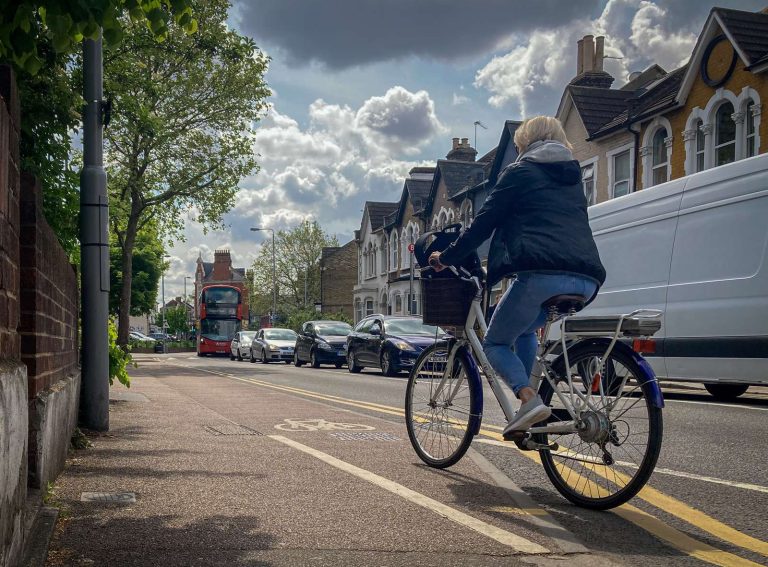Later today, McKinsey & Company will be giving a Keynote at Micromobility Industries’ flagship expo in California on the key micromobility trends it is witnessing in the US.
Ahead of their speech, Zag’s Editor caught up with Kersten Heineke and Darius Scurtu, two experts at The McKinsey Center for Future Mobility, to gather their key insights.
“The main message is that the shared micromobility market is still relevant, still growing, but we have seen a shift between the importance of shared kick scooters and shared bicycles in recent years,” Kersten tells Zag Daily.
“We have seen for the second consecutive year in a row that shared bicycles, which includes station based and free-floating bikes, have overtaken shared e-scooters as the most relevant shared micromobility mode in the US. We now expect this trend to continue until 2035.”
According to McKinsey’s findings based on data from NACTO there were 133m shared micromobility trips in the US in 2023 – 68m shared bicycle trips and 65m shared e-scooter trips.
In 2019, there were 136m shared micromobility trips which means 2023 did not reach pre-Covid levels.
“Our expectation, and also what we hear from market participants, is that we will reach trip volumes that go beyond pre-Covid levels in 2024,” says Darius.
Between 2018-2023 the overall shared micromobility market increased by 10% per year, but zooming in on the years 2021-2023, the market grew by 9%.
For shared bicycles specifically however, this segment grew by 8% between 2018-23 and 17% between 2021-2023.
What comes next?
Under McKinsey’s so-called ‘Base Case’ scenario – which would mean cities choose to not actively invest and subsidise micromobility in the coming years – the consultants still expect the number of shared micromobility trips to grow to 190m by 2030 and 260m by 2035, which would mean a doubling as compared to 2023.
In its ‘Upper Case’ scenario – where cities view micromobility as an integral part of the future mobility landscape and increase their spending in the sector – McKinsey projects the number of shared micromobility trips to balloon to 400m by 2030 and 540m by 2035, which would imply a fourfold increase as compared to 2023.
3 main drivers shaping the micromobility market
The McKinsey projections are based on sociodemographic and economic developments and incorporate three main drivers – regulation, consumer behaviour and technology.
“For us these are always the three main drivers that will shape the mobility markets in the next 10 to 15 years and are the foundations of our market models,” Darius explains.
On the regulatory side, McKinsey has found that almost 60% of cities in the US and EU support micromobility as a valuable mode to reach their climate goals. “Some examples include where cities are restricting car usage like we’re seeing in Paris, or cities that are incentivising micromobility usage by setting up parking spots, new charging spots, or building bicycle lanes. This 60% figure is quite impressive.”
San Francisco has for instance announced plans to increase the trip share via sustainable modes such as bikes and public transit to 80% by 2030, while Denver has set a target to increase the amount of residents walking, cycling, rolling or scooting to 15% by 2030.
Cities re-think their collaboration models
Though many cities generally intend to foster micromobility, many are re-thinking their collaboration models with operators.
“Cities are not willing to take the financial burden as the only party in the whole system,” says Kersten. “They want financially stable operators and what we’ve seen recently is more cities trying to incentivise operators to share their revenues with them as an indicator of their financial stability. More broadly, cities are still not aligned on the right level of regulation. They’re still experimenting with, for example, the right ratio of vehicles per capita.”
US consumers want micromobility
A recent McKinsey consumer survey of 4,000+ respondents found that 24% regularly use micromobility (at least once a week), and 30% plan to increase their usage in the future.
Preferences differ by mode with 50% of consumers preferring the traditional or electric bike as their main micromobility mode.
Drilling down into the specific features that are important to consumers, 70% said GPS was the most important. Status monitoring (64%), navigation services (64%) and fitness tracking (64%) were the three next most important features.
Range & lifetime on the up
With the hardware itself, McKinsey’s assessment of shared micromobility fleets shows that new models of e-scooters can now last for up to five years on average. E-scooter battery ranges are also increasing by 2-3x compared to 2021 models, giving up to 100km range. E-bike ranges are higher on average at 150kms.
Prices for new vehicles however are expected to evolve differently. E-scooters are anticipated to decrease in line with a reduction in component costs – batteries are used as an example which are expected to decrease by almost 50% over the next three years. Bike prices are expected to increase due to an ongoing shift towards more expensive electric bikes and as consumers show a willingness to pay more for expensive connectivity and safety features.
What does this all mean for industry players?
For manufacturers and suppliers, building enhanced connectivity and safety features will be important.
“Apps that remind you about the next maintenance cycle, or small camera devices on bikes which sound an alarm and call an emergency number when there is a collision – it is these types of features that are getting more and more important,” Kersten says.
Shared operators are being advised to collaborate more with cities and set targets which directly connect with their overarching climate objectives. “Collaboration with cities and agreement on common, traceable goals during tender processes is the key to winning,” explains Darius.
But he also asserts that shared operators and micromobility manufacturers need to collaborate more on vehicle design too.
“Consumers are expecting purpose-built vehicles that serve their specific use cases such as cargo bikes to transport your baby, so we will see more partnerships in this respect as well.”
McKinsey believes that it is the profitable and scaled shared operators that will have the competitive edge in the future, which in turn will further spur market consolidation.
For investors, it will be encouraging to note that McKinsey expects micromobility markets will continue to grow across all regions in the US until 2035.
Kersten and Darius will be sharing further insights on the current micromobility trends at Micromobility America.




